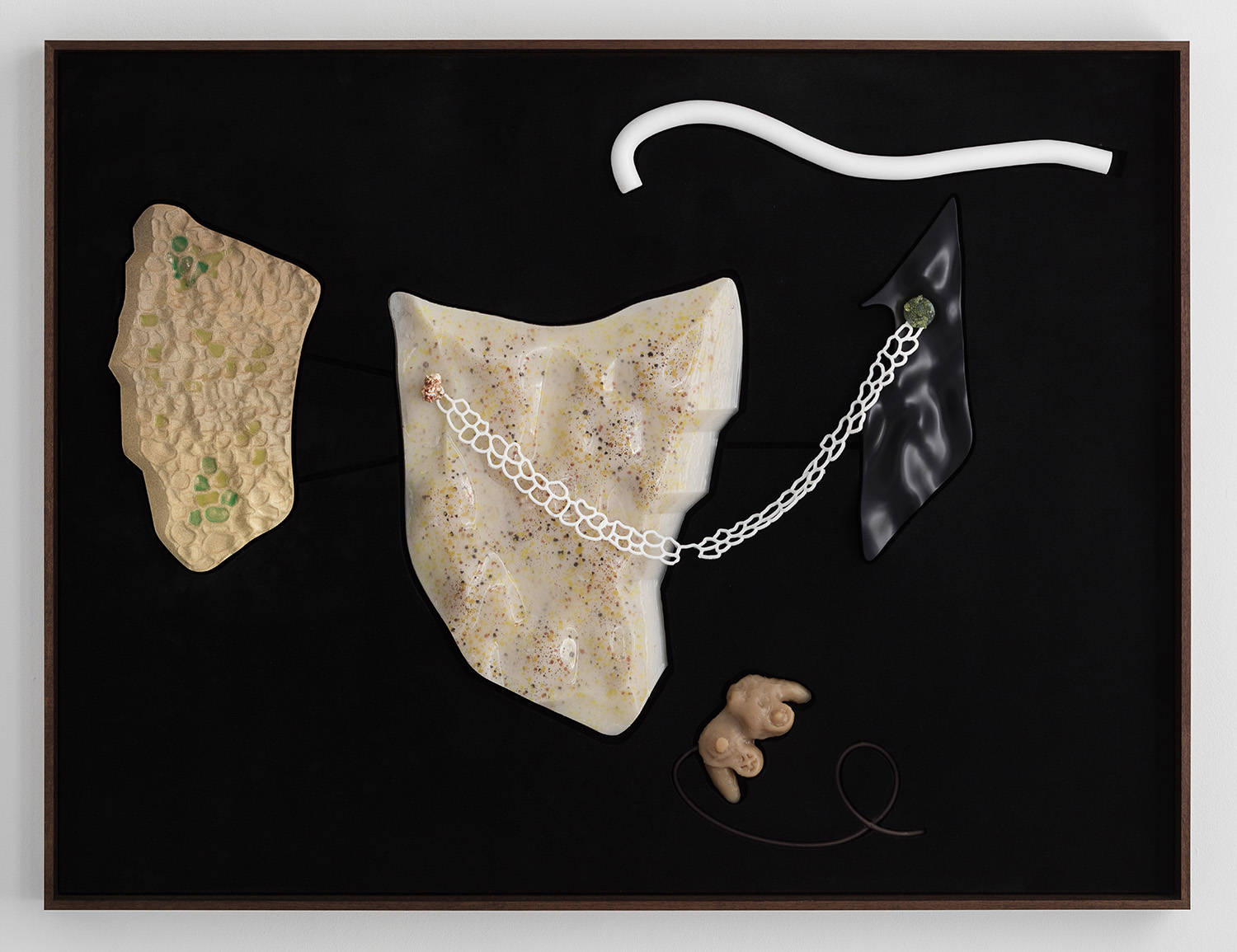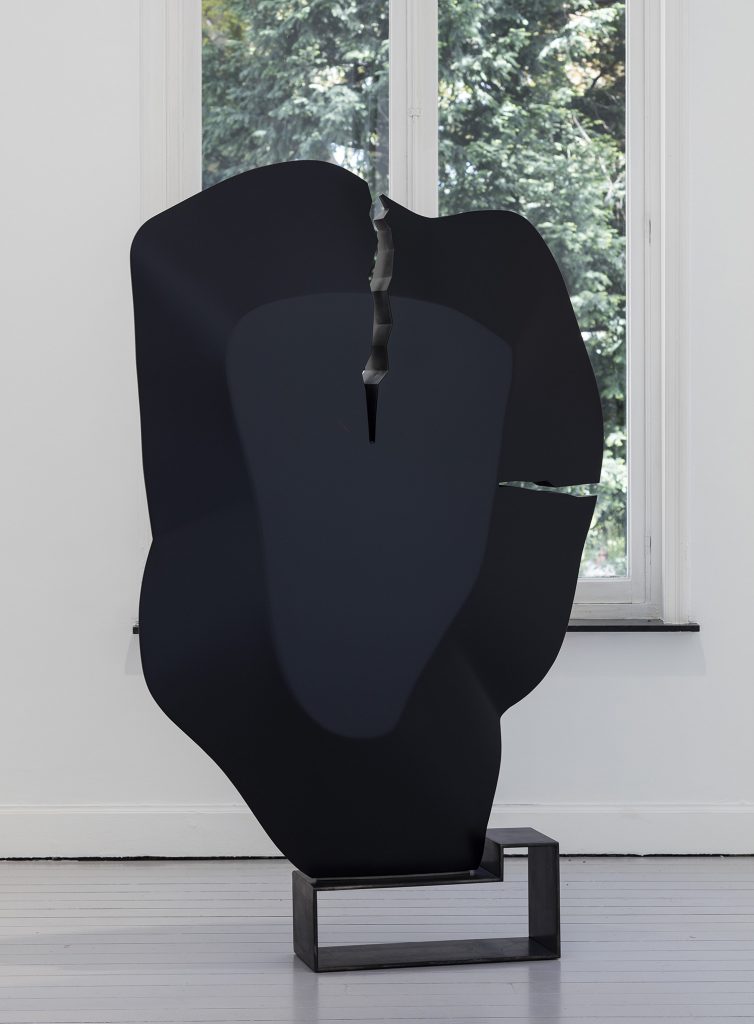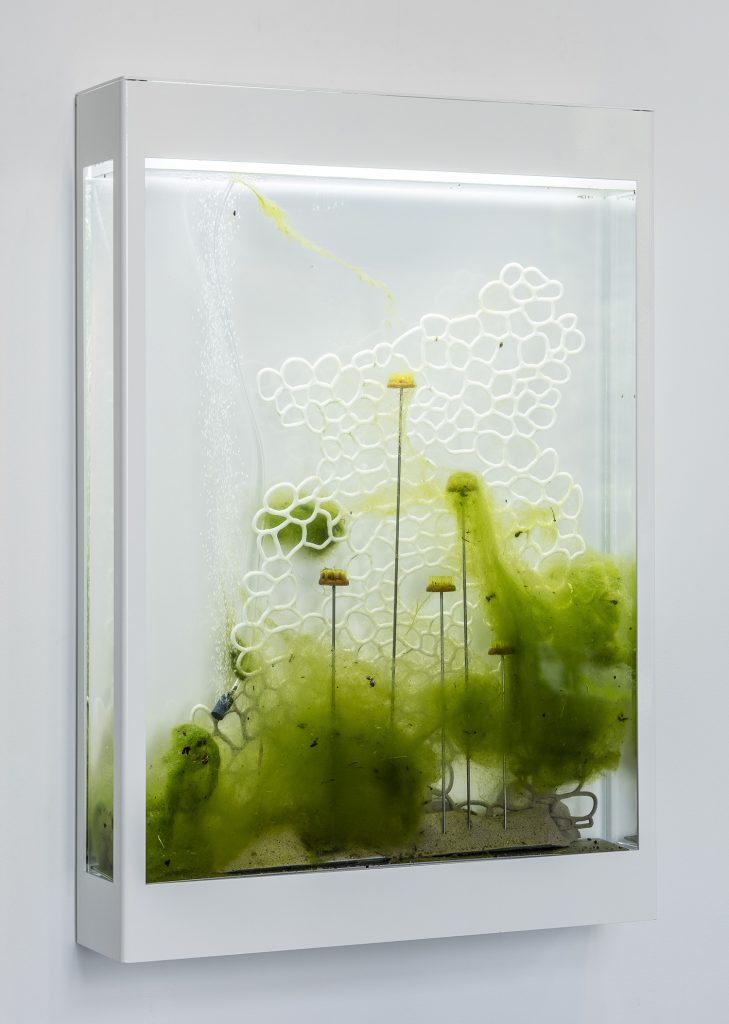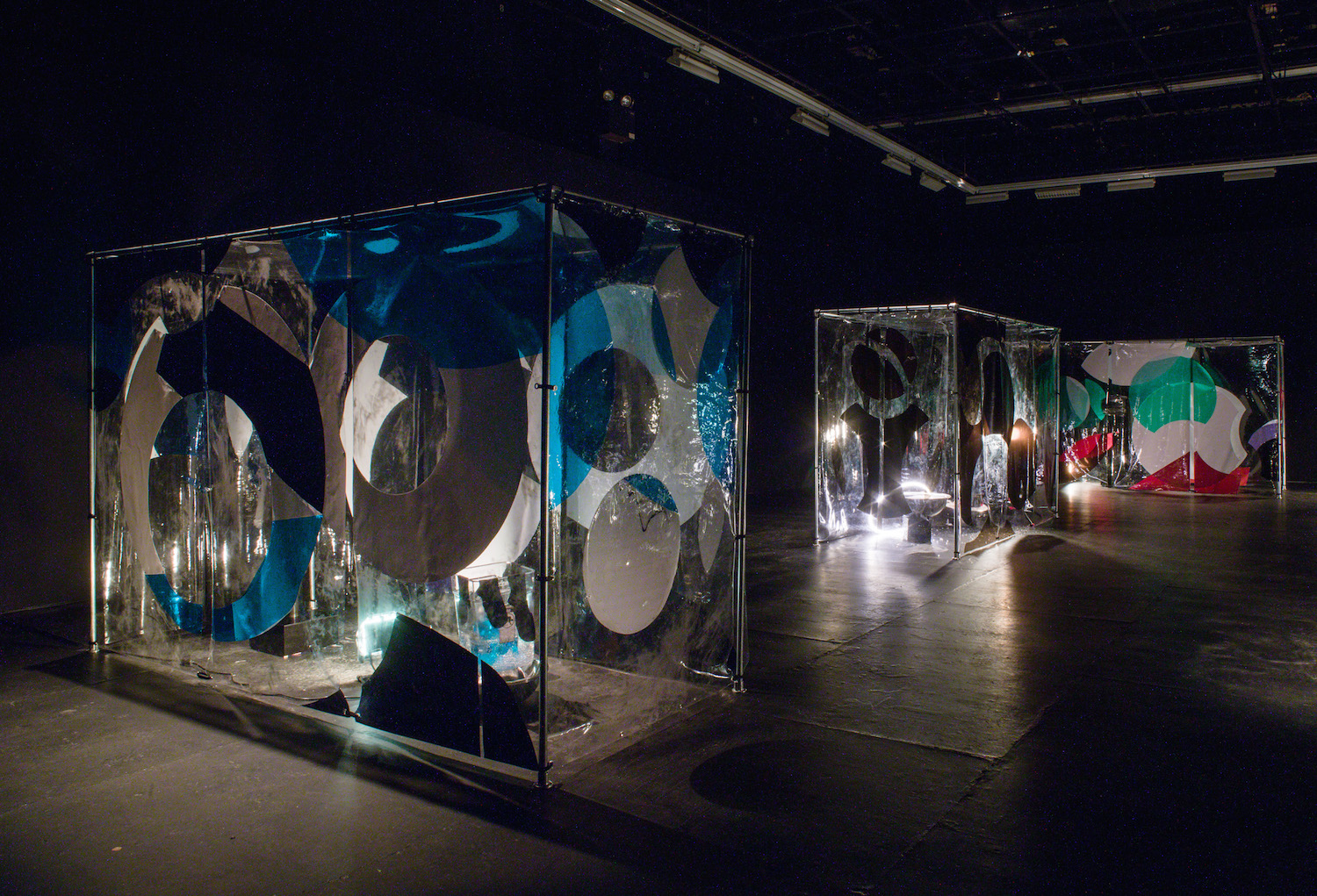Anicka Yi’s first exhibition at Gladstone Gallery presents evidence of hybridization and symbiosis between different forms of life, whether animal or plant, and challenges the border between the natural and the synthetic. Though unidentifiable at first, the painting-like sculptures of her Techno-Geo series (2019) explore the organic and the geological. Here, the boundaries between categories are blurred. The title of the series is also a nod to the neo-geo movement; the notion of interconnection, vital to Yi’s practice, was also an integral part of Peter Halley’s work from the 1980s.
Releasing The Human from the Human(2019) consumes the entirety of the room with its greenish luminous balls made of kelp, suspended like Chinese lanterns. Inside each sphere is a mechanical device with a small insect flying in a circle, its shadow projected on the walls. Yi’s Aquaspaces (2019) are sculptural forms that evoke the architecture of a computer network or the structure of an urban area. Using algae as a source of energy and life, they foster the coexistence of different forms of life.
It is common practice for Yi to work collaboratively with researchers from varying fields. During a studio visit by MoMA this past April, she mentioned her residency at MIT and the difficulties that come with collaboration. “A lot of people who are very highly recognized at the top of their field probably don’t have time for someone like me, realistically.” Perhaps this is a clue to the meaning of her sculpture The Scientists(2019), a dense black foam form that attempts to penetrate the beam of a small laser in movement.
In a recent interview with the Louis Vuitton Foundation, Yi expressed her pessimism about the future of humanity, and stressed our duty to radically change the way we interact with the natural environment. In a time when the global report of the Intergovernmental Scientific and Policy Platform on Biodiversity and Ecosystem Services predicts the extinction of millions of animal and plant species in the near future, Anicka Yi’s work is more relevant than ever — it delves into the perils of a world where negligence and irresponsibility is commonplace, despite the imperatives of scientific data.







